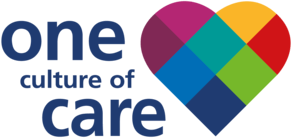A new Essential Safety Training (EST) Course has been added to our Electronic Staff Records (ESR) to make all sure colleagues have an understanding in their role in patient safety – whether they work directly with patients or not.
Head of Patient Safety, Sharon Cundy, said: “Patient safety is everyone’s business. When patients are harmed, it has an impact on them, their loved ones, our colleagues, and others who work in the healthcare system.
“It is crucial that all colleagues, whatever their role, see safety not just as our collective responsibility, but as a key priority for us all. We all need to think differently about what patient safety means and how we can all make improvements.
“There are potential risks to patients are everywhere. It may be the risk of falling when a patient is unsteady on their feet or the risk of pressure ulcers developing when someone is immobile for a long period. It may be an unknown allergic reaction to a medication, or it could be staff not trained on a piece of software."
Here are a few scenarios, which demonstrate that patient safety is everyone's business:
Scenario one:
You leave work for the day. As you near the car park, you find a stack of papers with patient names, addresses, phone numbers and sensitive health information on top of one of the cars parked in the car park.
What would you do?
- Do nothing and leave them there. Someone probably left them for a minute and will return to pick them up.
- Pick them up and take them to Health Records.
ALL staff have a duty to protect our patients confidentiality and safety. The records would need to be picked up and taken to Health Records. This should then be followed up with the Information Governance Officer as a data breach. Patient safety should remain paramount at all times. Patient safety is everyone’s business.
Scenario two:
You have to go into a patient's room to fix the light. When you enter the room, you see that the medic and the nursing staff are talking to the patient. The patient seems quite upset.
What would you do?
- Enter the room and quietly fix the light
- Leave the room and come back later
You should leave the room and go back later. The healthcare team appears to be talking about sensitive information which you do not need to hear. By leaving, you will allow the team to finish the discussion without concerns of breaching the patients privacy. Patient safety is everyone’s business.
Scenario three:
You are walking down the corridor to a meeting and witness a patient fall over. You are not a clinical colleague and have not received any basic life support or falls training.
What would you do?
- Carry on walking as you might be late for your meeting
- Stop and see if the person is o.k.
We all (clinical and non-clinical staff) have a professional duty to stop and offer help. Assess the situation and determine if they are hurt. If you believe the person is injured, do not attempt to get them up. Call for help. Patient safety is everyone’s business.
ESR information
The course will appear soon on everyone’s ESR – it’s called 372 CHFT Patient Safety Training L1. It needs completing once only and takes between 30 minutes to an hour to do.
If you have already completed the package your competency will show as green.

